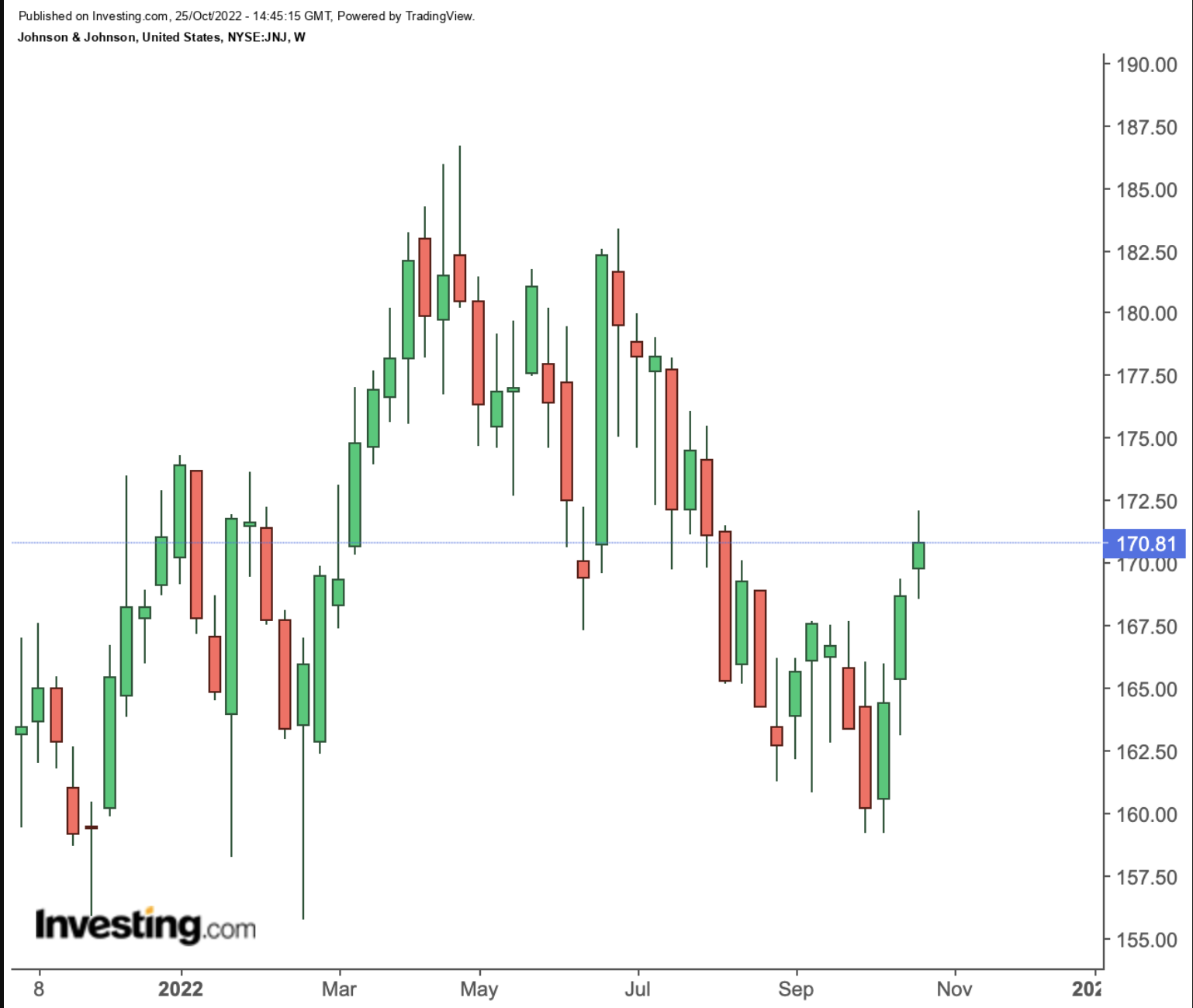- It remains difficult to bet against J&J in the long term
- Near-term challenges around currency and inflation will linger into 2023
- Investors probably shouldn’t rush to sell shares, but a cheaper price does seem a very real possibility
It’s exceptionally difficult to argue against Johnson & Johnson (NYSE:JNJ). J&J is one of America’s great companies. As I wrote earlier this year, it alone accounts for something in the range of 0.8% of global health-care spending.
And JNJ stock, for the most part, has been a winner. Shares admittedly underperformed during the 2010s bull market — but in 2022, the stock’s defensiveness is paying off. At Monday’s close, JNJ is down just 0.05% year-to-date, and shareholders are positive when accounting for dividends. The S&P 500 index over the same period has lost 19.3%.

Source: Investing.com
Long term, there’s not much reason to expect performance will change. J&J’s pharmaceutical pipeline looks solid, and its leadership in medical devices remains intact. This still seems like a “set it and forget it” type of stock.
But short-term, the company continues to face significant challenges. And after third-quarter earnings last week, it’s hard not to wonder if those near-term challenges won’t grab the market’s attention once again.
Put another way, the long-term opportunity might get a bit better for investors willing to stay patient here.
Mixed Q3 Earnings
At first blush, it looks like the market is optimistic toward J&J’s Q3 earnings report. JNJ stock has bounced off support around $160, and gained 4% since the beginning of last week.
But the S&P 500 actually is up 6% over the same six trading sessions. For the most part, it seems to be market strength rather than the earnings report that has driven JNJ higher.
The modest underperformance perhaps makes some sense. The quarter looked decent relative to analyst consensus, with results modestly ahead of the Street on both lines.
Full-year guidance was held steady, which actually is good news, since J&J forecasts a greater hit from currency than it did after the second quarter. After Q2, J&J expected a 55% share reduction in adjusted earnings per share due to FX. Following Q3, the company raised its estimate to 68 cents.
But, as detailed on the Q3 call, that apparent strength is coming largely from non-operating areas, including “favorable employee benefit-related items” and higher interest income on the company’s $34 billion in cash. The outlook for operating profit margin actually came down (though due to currency rather than the underlying business).
To be sure, in this kind of environment J&J results still look solid. Excluding currency, full-year EPS is expected to grow almost 10% year-over-year. Including currency, and considering inflation, any growth at all looks like a win.
But at nearly 17x that EPS guidance, the stock isn’t exactly cheap. The lion’s share of profit still comes from the pharmaceutical business, and rivals like Eli Lilly (NYSE:LLY) and Pfizer (NYSE:PFE) trade at far lower multiples. Right now, investors still are to some degree paying up for quality.
Looking To 2023
Again, long term that attitude makes sense. But in a still-volatile market, it remains to be seen whether investors will keep their eyes on the long term.
That’s largely because the near-term challenges facing J&J aren’t going away any time soon. On the Q3 call, J&J raised its outlook for currency effects next year to 45 cents. That’s a full 4.5-point headwind to earnings growth. And that outlook doesn’t include incremental effects from inflation.
Meanwhile, key drug Stelara, which accounted for more than 10% of revenue in the first nine months of the year, faces generic competition in the second half of next year.
Finally, the consumer health business is being spun off as Kenvue. GlaxoSmithKline (NYSE:GSK) this year spun its consumer health business into Haleon (NYSE:HLN). And while I’m bullish on (and long) HLN, the market so far has not been. Should Kenvue hit the public markets during a period of still-high inflation, that plus typical post-spin declines could add a modest headwind to shareholder returns next year.
All told, it looks like it’s going to be quite a while before JNJ gets to benefit from a normalized environment. In the meantime, reported EPS is expected to increase less than 3% this year, per guidance, and less than 4% next year, according to Wall Street consensus.
Investors probably should be willing to hold JNJ despite that kind of near-term growth. But that’s not nearly the same as predicting that they will.
Disclaimer: As of this writing, Vince Martin is long shares of HLN. He has no positions in any other securities mentioned.
